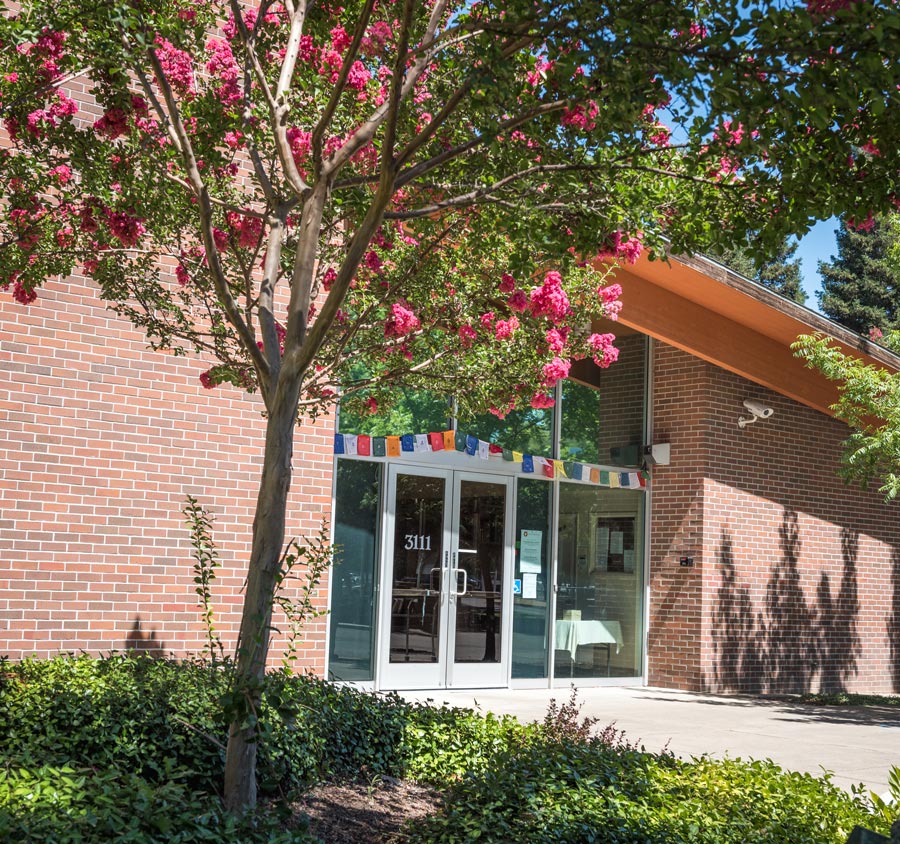
After much investigation, the first of several unhealthy trees on the grounds of Sacramento Dharma Center was felled this week. Visitors will see that the tree is being ground to chips, a procedure that destroys the infestation and transforms the tree into beneficial mulch for other plants. Come to our workday and help spread the mulch! Healthy wood from the trunk will be turned into boards, perhaps for shelves in the Center.
SDC’s arborist and active volunteer, Terry Wenner, explains:
Climate change and severe drought in California over the past five years are two natural forces showing up around the world, and now right here at Sacramento Dharma Center. All around our region, coast redwoods, various birch trees, tulip trees, and alders, can be seen standing dead or in distress. These species do not grow naturally in our hot, dry valley, and the recent extremes have been culling some of them out.
The Valley Oak is a native which has evolved to survive extremes of heat and aridity found here, so imagine our surprise when we noticed yellowing and then browning of one of the three oaks at the east end of the property. This sign of distress caused us to look at the tree closely to see what the problem might be.
Two things stood out:
1. This oak, though similar in appearance, was not a Valley oak like the other two, and
2. There were white globs of foamy sap here and there on the bark of the trunk and branches.
The California Department of Agriculture helped us identify the tree and its problem. The tree was a Pedunculate oak, also known as English Oak, not suited to this climate. The problem probably was foamy bark canker disease, caused by an infestation of oak bark beetles carrying a virulent fungus. Perhaps Food and Ag will keep the infested samples brought to them in order to ascertain that this is the first incidence of this disease in Sacramento County.
For our purposes, the extensive beetle colony, now in the larval stage, with or without the fungus, dooms the tree to death. Prompt removal, and the process of chipping, is called for in order to prevent a new generation of beetles from emerging to infest other trees. After careful consideration by the Board of Directors, removal was ordered and is now nearly complete.
BACK TO NEWS & EVENTS

